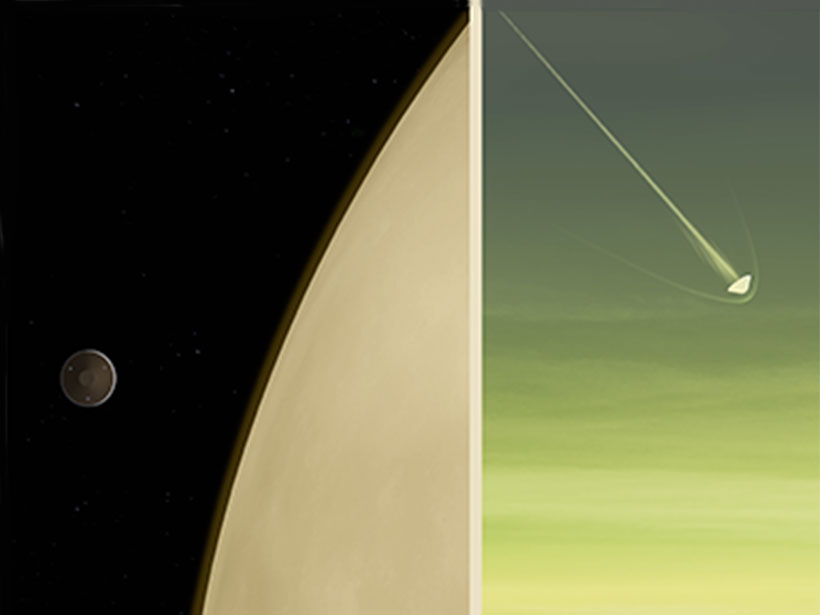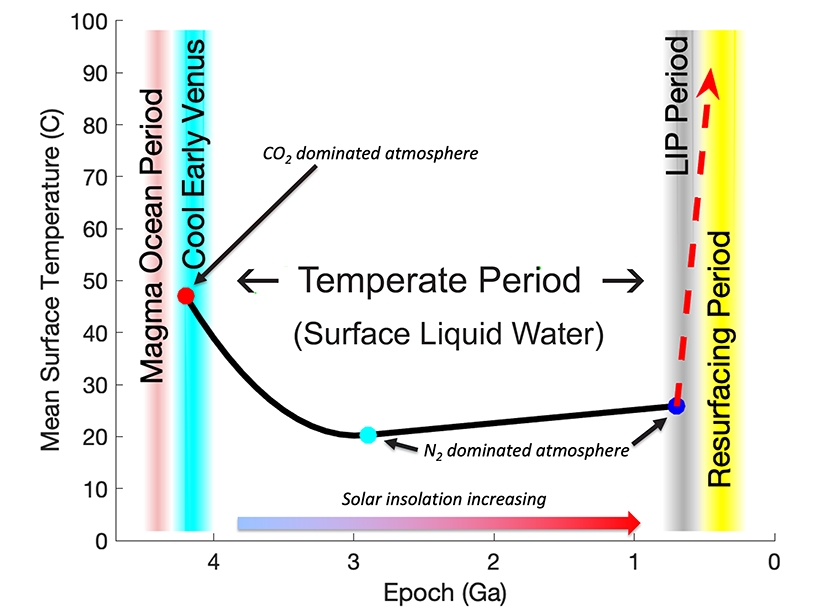Solar-powered hot-air balloons, floating 2.5 times as high as Mount Everest, detected a buried explosion more clearly than ground-based sensors did.
Venus
Mission to Venus Could Help Solve an Atmospheric Mystery
NASA’s recently announced DAVINCI+ mission to Venus will probe the planet’s atmosphere, hoping to shed light on the unknown dark patches that surround the planet.
Is Venus Volcanically Active? New Approach Could Provide an Answer
A strategy that combines geologic mapping with data on how the planet’s surface emits and absorbs microwave radiation could potentially identify recent lava flows.
Fifteen Years of Radar Reveal Venus’s Most Basic Facts
Venus’s heavy atmosphere tugs the planet’s surface enough to change the length of its day by up to 21 minutes.
Exploring Venus by Balloon
Aerobots could help reveal secrets of Earth’s mysterious twin planet.
What Happened When the Lithosphere of Venus Broke?
Although Venus does not have plate tectonics today, previous episodes of intense tectonic activity could have resulted in a distribution of crustal thickness and age resembling the plate we see today.
¿Podría la Vida Estar Flotando en las Nubes de Venus?
Si están presentes, los microbios podrían explicar patrones de evolución en la atmósfera planetaria de Venus, al observarse con luz ultravioleta.
Venus Exploration Starts in the Lab
Most technology would not last a day on our planet’s evil twin. By creating Venus’s surface and atmospheric conditions here on Earth, a team of engineers is designing spacecraft technology that will last for months.
How Long Was Venus Habitable?
Climate simulations of Venus’s history could provide insights into the habitability of Earth and of exoplanets.
Resurrecting Interest in a “Dead” Planet
New research suggests that the surface of Venus is busy, but it may take new missions to our “sibling” planet to confirm this.










